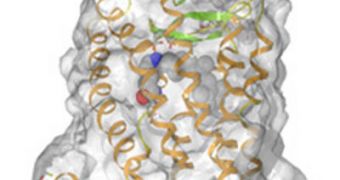Proteins are without any doubt the most important class of compounds in all living things. They are made up of cleverly-combined sequences of amino-acids, of which about 20 are found in all life forms. The manufacturers of these molecules are called genes, and it's their responsibility to provide the code for the sequence in which the acids will bind in the new protein. This order dictates the function of the protein, and researchers have now developed a new method of observing the process, PhysOrg reports.
The innovative method is relatively straightforward, yet very complex. Researchers say that, at least in theory, a non-natural amino-acid could be targeted to a specific location on the surface of a protein. This means that the area could then be used as a binding site for fluorescent probes. These are molecules that can readily be observed using existing microscopes. Having this ability would allow experts to gain even more insight into how the world of cells functions. Such research has very broad implications, from the field of microbiology to understanding how the human brain functions.
The team of investigators that developed the new method is based at The Rockefeller University. They showcase their findings in the latest issue of the esteemed scientific publication Nature. In simpler words, what the science team here did was create a new tagging method aimed at proteins, with the express purpose of gaining a deeper understanding of how they function. The ultimate goal is to learn more about the human brain, which is the most complex tissue in the known Universe. Regardless, it is only made of the same 20 amino-acids that underlie the simplest bacteria.
“The long-term goal is to label receptors in live cells and do single molecule fluorescent studies. What you want is a probe that doesn’t perturb the protein and one that can tell you something about its structure and function. That’s what we have here,” explains the Rockefeller Richard M. and Isabel P. Furlaud professor, Thomas P. Sakmar, the leader of the science team. He is also the head of the Laboratory of Molecular Biology and Biochemistry at the university. Researchers in Germany, England, Spain and Switzerland were also involved in the new investigation.

 14 DAY TRIAL //
14 DAY TRIAL //